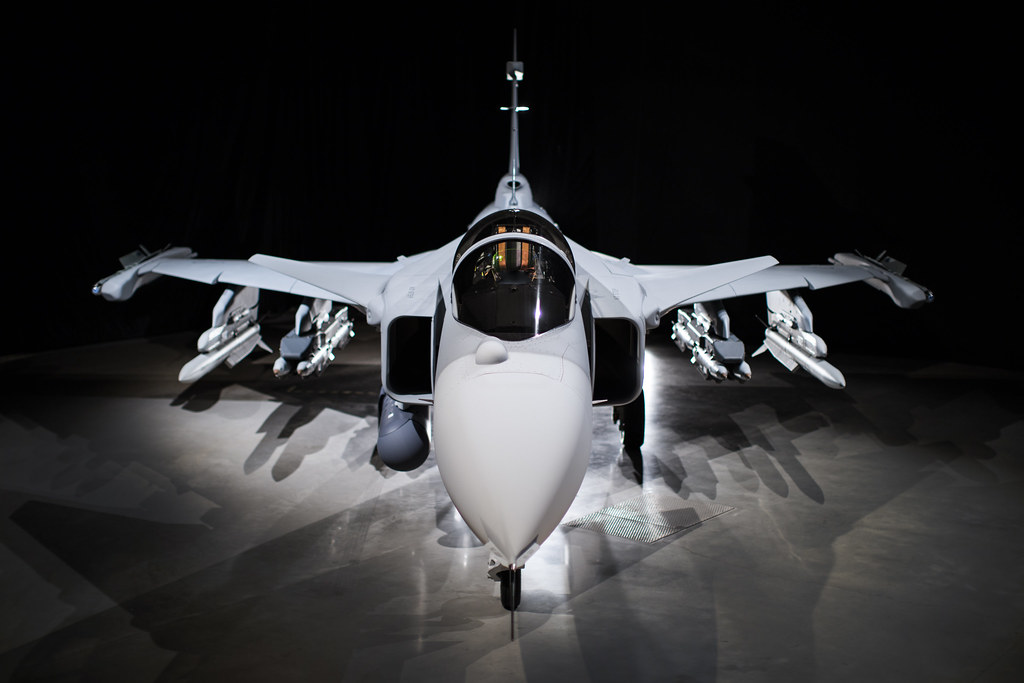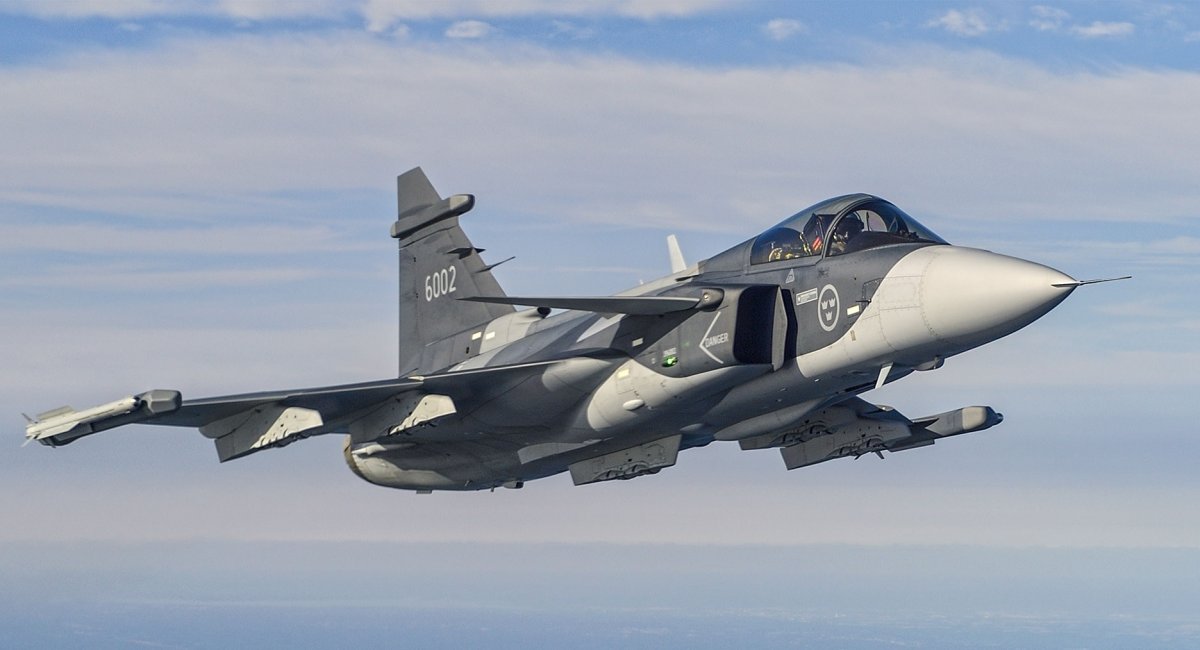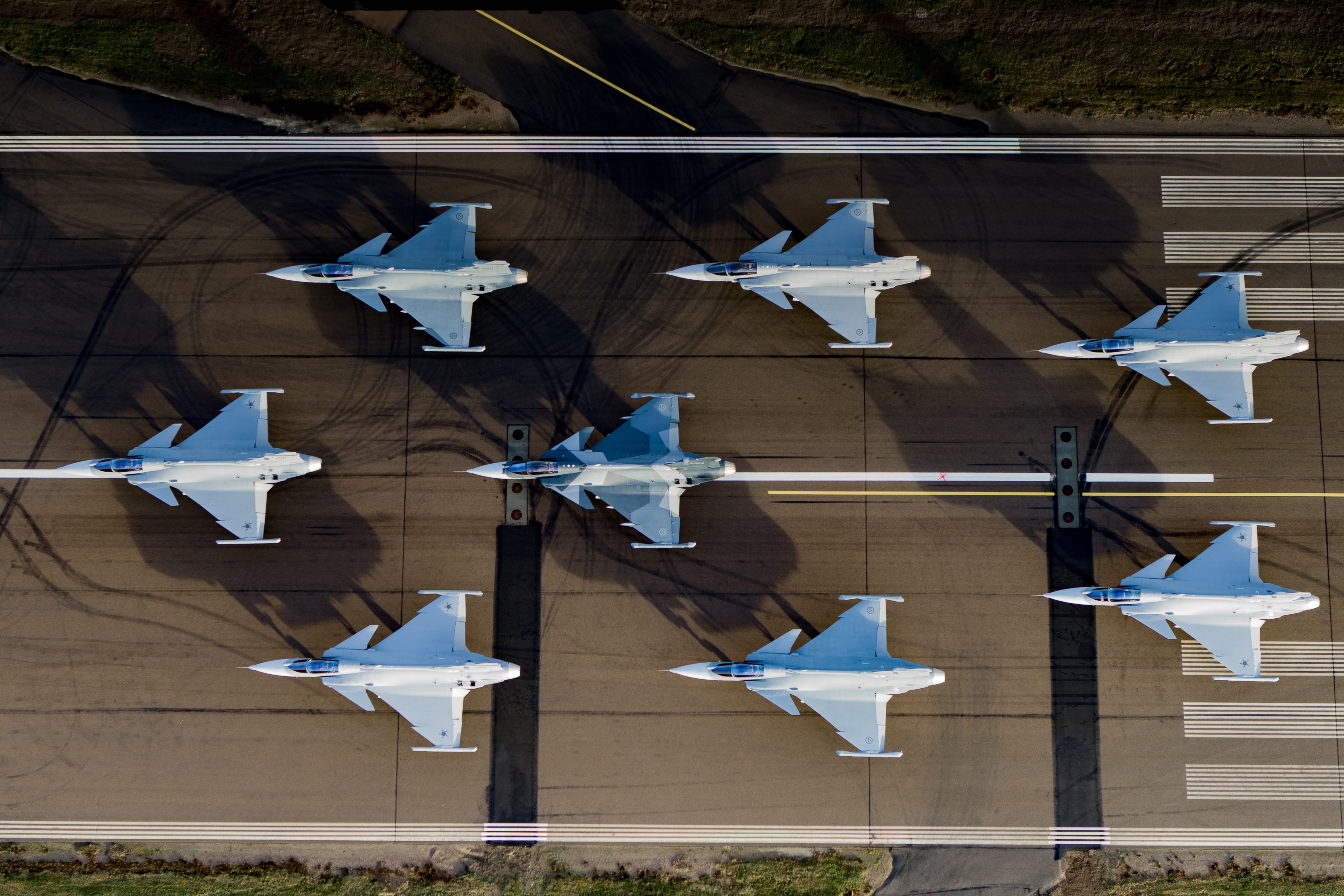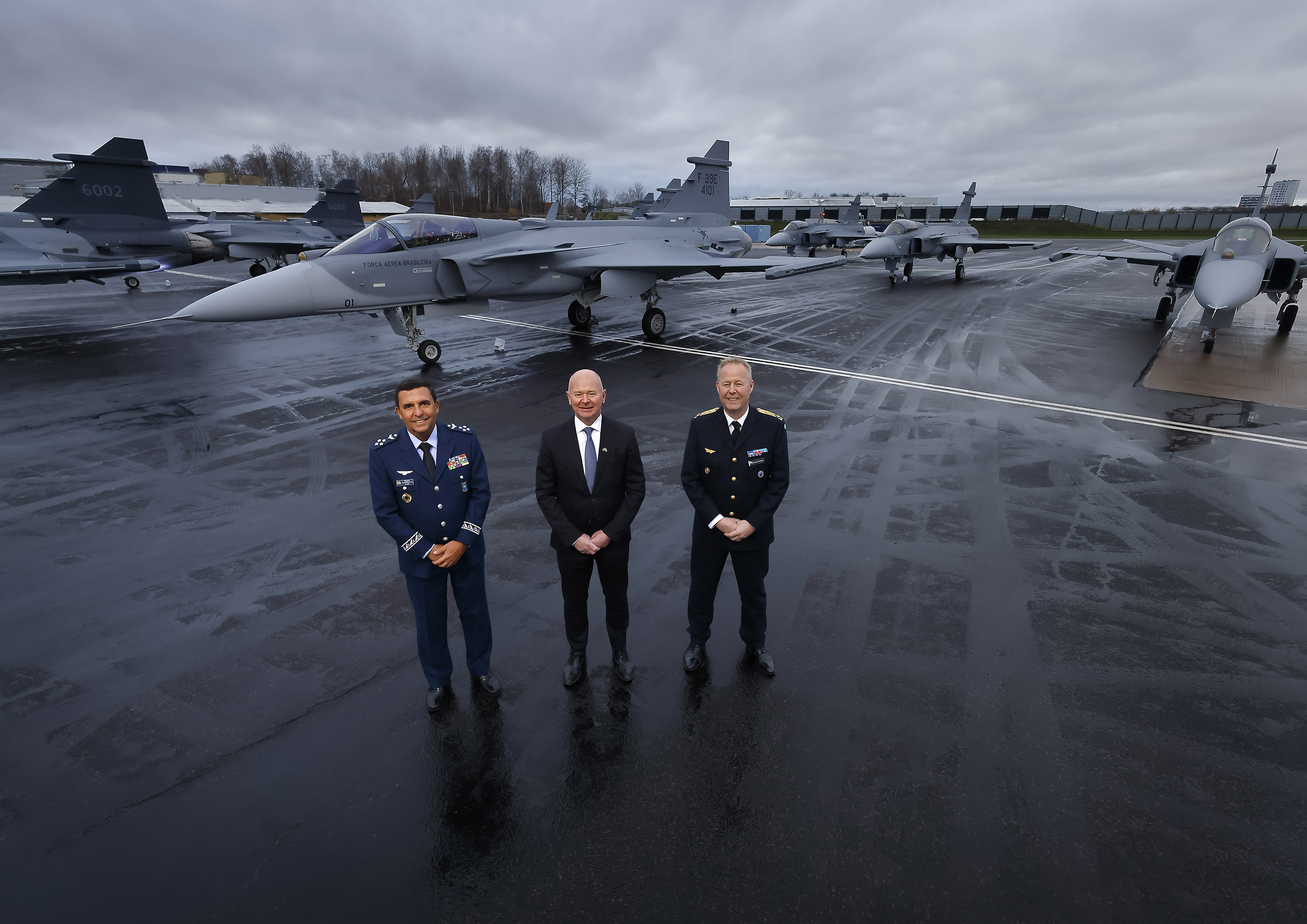Okés, rosszul tudtam. Az új centroplán vezetett meg, azon ugyanis minden más. A belépőél, az alsórész az új futóaknával és a többi. Ez okozta a félreértést.Az ábra arányai valóban nem túl jók...
Az azonos szárny dolgot nem én találtam ki.
"...Gripen NG aircraft will, in effect, be new-build machines although some elements of existing JAS 39C/Ds will be re-used, notably the wings. This is made possible by the E/F’s design, which widens the fuselage to achieve greater lifting area rather than enlarging the wing surfaces..."
A szárny amúgy jórészt kompoziz szerkezet. Gondolom azt nem tervezték újra, hanem megtartották a régit.
You are using an out of date browser. It may not display this or other websites correctly.
You should upgrade or use an alternative browser.
You should upgrade or use an alternative browser.
T
Törölt tag
Guest
Nekem ez a cikk csak most jött szembe, és most kicsit jobban elgondolkodtam rajta.Lelkük rajta, de az elmúlt 50+ év tanulsága az volt, hogy még batárnagy gépek sem élték túl olyan szutyok kis rakták találatait, mint az R-3Sz meg AIM-9B.
Annak az esélye manapság, hogy egy Gripen olyan sérülést kapjon, ami túlél. Háááááááááááááát....
Fogalmazzunk úgy, hogy csekély...
Manapság egyre inkább Igen/Nem alapú a történet. Ha eltalálnak, akkor neked annyi, ha nem, akkor meg nem.
Nem elsősorban azon van a hangsúly, hogy BATTLEfield, hanem azon, hogy battleFIELD.
Itt inkább arra kell gondolni, hogy pl. békeidős üzemeltetésnél is javíthatják ezzel az olyan sérüléseket, amely olyan alkatrészeket érint, amelyek nem feltétlen helyszínen raktározandó dolgok. Ezzel rövidülhet a gépek kiesése, nő a rendelkezésre állás. Nem kell emiatt akár még kiképzési repüléseket sem lemondani.
Röviden: légiipar pillanatnyilag viszi a pénzt, a szárazföli technika meg hozza!

Brazil és a svéd légierő hamarosan megkapja az első Saab Gripen E vadászgépeket.
Két ország összesen 106 gépet rendelt, ebből a svédek 60-at, 30 gép már a futószalagon van.
https://www.airrecognition.com/.../7811-brazilian-and...
Két ország összesen 106 gépet rendelt, ebből a svédek 60-at, 30 gép már a futószalagon van.
https://www.airrecognition.com/.../7811-brazilian-and...
T
Törölt tag
Guest
És brazilok a második eresztés miatt csökkentették a KC390-esek mennyiségét. Szóval a második turnust is meg lehet előlegezni.Brazil és a svéd légierő hamarosan megkapja az első Saab Gripen E vadászgépeket.
Két ország összesen 106 gépet rendelt, ebből a svédek 60-at, 30 gép már a futószalagon van.
https://www.airrecognition.com/.../7811-brazilian-and...
A SAAB sajtóközleménye:
A Saab novemberben megkezdi a Gripen E repülőgépek leszállítását Brazíliának és Svédországnak
"Linköpingben körülbelül 30 Gripen E van a futószalagon..."
A Saab novemberben megkezdi a Gripen E repülőgépek leszállítását Brazíliának és Svédországnak
"Linköpingben körülbelül 30 Gripen E van a futószalagon..."

After Rejecting Dassault Rafale, Brazil Set To Receive The 'Most-Advanced' Variant Of SAAB Gripen Fighter Jet
After Rejecting Rafales, Saab is all set to handle deliveries of its Gripen E multi-role-fighter aircraft to Swedish, Brazilian air forces.
 eurasiantimes.com
eurasiantimes.com
Legyen meg

 defence-ua.com
defence-ua.com

Шведська Saab готова почати в 2022 році поставки серійних JAS 39E Gripen для Бразилії та Швеції | Defense Express
Замовлення на поставку новітніх винищувачів JAS 39E Gripen Бразилія та Швеція дали ще в 2013 та 2014 роках, перші два літаки замовникам були поставлені в 2019 році
T
Törölt tag
Guest
Cseheknek semmit nem lehet eladni...nem értem a SAAB lelkesedését.

K
kamm
Guest
Plane, amikor a Jane's "eastern European country" cimszoval titulalja oket.Cseheknek semmit nem lehet eladni...nem értem a SAAB lelkesedését.
 (Jo persze, ez a Jane's, nem az oda iro sharpest minds miatt hires.
(Jo persze, ez a Jane's, nem az oda iro sharpest minds miatt hires.  )
)
T
Törölt tag
Guest
Nem hiszem hogy a "lelkesedés" szó a megfelelő kifejezés a SAAB állapotára.Cseheknek semmit nem lehet eladni...nem értem a SAAB lelkesedését.
szerintem a cikk utolsó bekezdése a lényeg:
"...Saab's statement came days after Janes first revealed that the Czech government is considering its long-term fighter plans, with the news on 3 November that Lockheed Martin had responded to a request for information with its F-35A Lightning II. Speaking under the Chatham House Rule, an official said that the Czech government was looking at a type selection to take place in 2025, ahead of deliveries from 2027...."
Szerintem ez a cikk inkább azt mutatja hogy vadászgép ügyben a Csehek más utakon járnak mint mi.
Nálunk az a szándék - szerintem helyesen - hogy feljavított Gripen C/D kel húzzuk ki a 30-as évek végéig, az új generációs gépek várható szolgálatba állásáig.
A mi utunk azt jelentené hogy teljesen kihagyjuk az F-35 lépcsőfokot (ami szerintem helyes döntés!)
Jelenleg nekem úgy tűnik mintha a Csehek nem akarnák kihagyni ezt a lépcsőfokot sem...(?)
K
kamm
Guest
Tegyuk tisztaba a dolgokat, viszonylag vilagos volt eddig is, hogy nem lesz F-35 a cseheknel sem, tobb okbol sem.
Egyreszt maga a gep es az operational cost eszement osszeg lenne, masreszt az infra atallitasa meg megegyszer annyi - mindezeket amugy mar miinimum 20x leirtuk, nem tudom, miert csinalnak az Amerika-rajongok ugy, mintha nem hangzott volna meg el sosem...
Amugy pont mai cikk es idevago info van benne sok helyen:

 breakingdefense.com
breakingdefense.com
A csehek kozelgo beszerzeserol:
"The two main bidders are the incumbent, Saab, which are offering Prague 24 of either its JAS-39C/D or the new-generation E/F models, and Lockheed, which is offering a high and low price point: the same F-16V Block 70/72 jets already procured by neighboring Slovakia and Bulgaria, or the F-35A conventional model.
Due to production rates and other factors, the two packages are priced close to one another, with the company offering 18 of either the F-16s or F-35s. Lockheed pins the F-35 at $78.9 million per jet. While a competitive price (and roughly US $11 million less per unit than the price agreed to on the Polish F-35 procurement), an F-35 pick over the Gripen means the Czechs would buy capability over capacity while also absorbing the costs of switching suppliers from Sweden to the US.
A considerable complication, according to more than one analyst, is switching from Swedish to US infrastructure. One former Czech air force officer experienced in working with the Gripen noted that “the price of changing out numerous security protocols and the integration of a new system for secure datalinks would prove to be prohibitive.”"
A finnekrol:
"However, the US Defense Security Cooperation Agency (DSCA) offer for Finland actually priced the two Boeing aircraft as several million dollars per unit higher than the F-35, likely rendering their chances moot. That leaves the F-35 up against the European powers: the Dassault Rafale from France, the Eurofighter, and perhaps most notably, the Saab Gripen from neighboring Sweden.
Finland has a long border, and an even longer and unhappy history, with Russia. So whatever aircraft Finland acquires must be effective against both Russian air defenses and Moscow’s latest fighter aircraft, which makes survivability the number one concern. In that regard, both Lockheed and Saab likely think they have an edge due to the F-35’s stealth and the Gripen’s ability to conduct dispersed operations from highway airstrips, which company officials note means the plane frees Finland up from relying on air bases likely to be early targets in any Russian conflict.
Saab is trying to stack the deck as well, but noting that the electronic warfare system in the Gripen-E is not the focus of Russian counter-EW technologies, as Moscow has instead been pouring R&D into countering American systems. They are also offering a package that includes not just 64 Gripen-Es, but a pair of GlobalEye airborne surveillance platforms.
Unsurprisingly, given the almost $12 billion price tag for the competition, political maneuvering is happening behind the scenes. On Oct. 30, the Finnish paper Helsingin Sanomat ran an extensive analysis of the HX program, calling out the need for a thorough cost evaluation for whichever aircraft is selected. European analysts looking at the competition point out this could be a response to a report from the Pentagon-funded RAND Corporation, released in early October. That document emphasized the need for closer US-Finland ties, which is being interpreted as a sign there is high-level US government pressure being exerted on Helsinki to select the F-35 over other options."
A svajci F-35 hamiskas es varhatoan kereszeletu gyozelmerol:
"The anti-F-35 coalition is mixed. Some are lawmakers who believe the cost is too high — an unnecessary “Ferrari” option, as one Swiss MP described it — while others have raised concerns about whether the Swiss government’s pricing analysis of the F-35 was correct or downplayed costs.
There is also a strong pro-European factor. Most of the French-speaking cantons in Switzerland predictably favored the Rafale. As Priska Seiler Graf, a Swiss MP who also expressed concerns about the cost, has stated, “We should seek a European solution… . [W]e don’t want to be dependent on the United States.”
Finally, there are anti-war groups like Group for Switzerland Without an Army (GSoA), which wants no investment in a new jet at all and is leading the ground game against it.
That coalition seems headed towards gathering the 100,000 signatures needed to initiate a new vote on the plane. (GSoA said last month that they will hit their threshold of required signatures by early next year if not this year, having already collected 25,000 signatures by the end of September.) If that happens, it would trigger a new nationwide vote on whether to move ahead with the fighter procurement.
How it is worded will be very important. If the vote is to continue with any fighter procurement, then it may pass with a thin margin. If the vote is specifically to move forward with the F-35, opponents believe it may well be enough to scuttle the deal.
Multiple analysts, including those with ties to the air defense industry, privately say that the movement against the F-35 will most likely garner the 100,000 signatures required to call a referendum. But overturning the selection is more difficult for the “Stop The F-35” initiative, as Swiss law requires a “double majority.” Meaning that a majority of voters, as well as a majority of cantons, must vote to overturn the sale — an eventuality that was originally rated as being unlikely to come to pass.
In September this Swiss national newspaper, Tages Anzeiger, ran an assessment of the program’s chances and stated that prior to the F-35 selection announcement, the Swiss public’s approval for proceeding with any fighter procurement was a razor-thin 50.1%. That figure might have been well below the 50%margin, the paper said, if earlier it had been revealed that the F-35 would be the aircraft selected in the final round.
The paper also echoed other opposition voices against the sale, with the headline charging that if the Swiss Air Force ends up flying the F-35, “the CIA is always in the cockpit” and that the actions of the aircraft and its pilots would always be under US government surveillance."
Magyaran, ahogy azt mar 100x is leirtuk, brutalis amerikai politikai nyomas nelkul az F-35 nem sok sansszal birna a legtobb europai, de leginkabb kozep-europai tendereken, hiaba generalnak gatlastalanul hazudozo promocsomagokat is hozza (lasd a svajciaknak adott "eleg a szimulator, nem kell repulni azzal a repulovel" F-35-os, teljesen ordenare ajanlatot. )
)
Egyreszt maga a gep es az operational cost eszement osszeg lenne, masreszt az infra atallitasa meg megegyszer annyi - mindezeket amugy mar miinimum 20x leirtuk, nem tudom, miert csinalnak az Amerika-rajongok ugy, mintha nem hangzott volna meg el sosem...

Amugy pont mai cikk es idevago info van benne sok helyen:

F-35 faces stiff competition as European nations decide on future fighters - Breaking Defense
Politics, diplomacy complicate decisions by Finland, the Czech Republic and Switzerland when it comes to the F-35 versus other American and international competitors.
A csehek kozelgo beszerzeserol:
"The two main bidders are the incumbent, Saab, which are offering Prague 24 of either its JAS-39C/D or the new-generation E/F models, and Lockheed, which is offering a high and low price point: the same F-16V Block 70/72 jets already procured by neighboring Slovakia and Bulgaria, or the F-35A conventional model.
Due to production rates and other factors, the two packages are priced close to one another, with the company offering 18 of either the F-16s or F-35s. Lockheed pins the F-35 at $78.9 million per jet. While a competitive price (and roughly US $11 million less per unit than the price agreed to on the Polish F-35 procurement), an F-35 pick over the Gripen means the Czechs would buy capability over capacity while also absorbing the costs of switching suppliers from Sweden to the US.
A considerable complication, according to more than one analyst, is switching from Swedish to US infrastructure. One former Czech air force officer experienced in working with the Gripen noted that “the price of changing out numerous security protocols and the integration of a new system for secure datalinks would prove to be prohibitive.”"
A finnekrol:
"However, the US Defense Security Cooperation Agency (DSCA) offer for Finland actually priced the two Boeing aircraft as several million dollars per unit higher than the F-35, likely rendering their chances moot. That leaves the F-35 up against the European powers: the Dassault Rafale from France, the Eurofighter, and perhaps most notably, the Saab Gripen from neighboring Sweden.
Finland has a long border, and an even longer and unhappy history, with Russia. So whatever aircraft Finland acquires must be effective against both Russian air defenses and Moscow’s latest fighter aircraft, which makes survivability the number one concern. In that regard, both Lockheed and Saab likely think they have an edge due to the F-35’s stealth and the Gripen’s ability to conduct dispersed operations from highway airstrips, which company officials note means the plane frees Finland up from relying on air bases likely to be early targets in any Russian conflict.
Saab is trying to stack the deck as well, but noting that the electronic warfare system in the Gripen-E is not the focus of Russian counter-EW technologies, as Moscow has instead been pouring R&D into countering American systems. They are also offering a package that includes not just 64 Gripen-Es, but a pair of GlobalEye airborne surveillance platforms.
Unsurprisingly, given the almost $12 billion price tag for the competition, political maneuvering is happening behind the scenes. On Oct. 30, the Finnish paper Helsingin Sanomat ran an extensive analysis of the HX program, calling out the need for a thorough cost evaluation for whichever aircraft is selected. European analysts looking at the competition point out this could be a response to a report from the Pentagon-funded RAND Corporation, released in early October. That document emphasized the need for closer US-Finland ties, which is being interpreted as a sign there is high-level US government pressure being exerted on Helsinki to select the F-35 over other options."
A svajci F-35 hamiskas es varhatoan kereszeletu gyozelmerol:
"The anti-F-35 coalition is mixed. Some are lawmakers who believe the cost is too high — an unnecessary “Ferrari” option, as one Swiss MP described it — while others have raised concerns about whether the Swiss government’s pricing analysis of the F-35 was correct or downplayed costs.
There is also a strong pro-European factor. Most of the French-speaking cantons in Switzerland predictably favored the Rafale. As Priska Seiler Graf, a Swiss MP who also expressed concerns about the cost, has stated, “We should seek a European solution… . [W]e don’t want to be dependent on the United States.”
Finally, there are anti-war groups like Group for Switzerland Without an Army (GSoA), which wants no investment in a new jet at all and is leading the ground game against it.
That coalition seems headed towards gathering the 100,000 signatures needed to initiate a new vote on the plane. (GSoA said last month that they will hit their threshold of required signatures by early next year if not this year, having already collected 25,000 signatures by the end of September.) If that happens, it would trigger a new nationwide vote on whether to move ahead with the fighter procurement.
How it is worded will be very important. If the vote is to continue with any fighter procurement, then it may pass with a thin margin. If the vote is specifically to move forward with the F-35, opponents believe it may well be enough to scuttle the deal.
Multiple analysts, including those with ties to the air defense industry, privately say that the movement against the F-35 will most likely garner the 100,000 signatures required to call a referendum. But overturning the selection is more difficult for the “Stop The F-35” initiative, as Swiss law requires a “double majority.” Meaning that a majority of voters, as well as a majority of cantons, must vote to overturn the sale — an eventuality that was originally rated as being unlikely to come to pass.
In September this Swiss national newspaper, Tages Anzeiger, ran an assessment of the program’s chances and stated that prior to the F-35 selection announcement, the Swiss public’s approval for proceeding with any fighter procurement was a razor-thin 50.1%. That figure might have been well below the 50%margin, the paper said, if earlier it had been revealed that the F-35 would be the aircraft selected in the final round.
The paper also echoed other opposition voices against the sale, with the headline charging that if the Swiss Air Force ends up flying the F-35, “the CIA is always in the cockpit” and that the actions of the aircraft and its pilots would always be under US government surveillance."
Magyaran, ahogy azt mar 100x is leirtuk, brutalis amerikai politikai nyomas nelkul az F-35 nem sok sansszal birna a legtobb europai, de leginkabb kozep-europai tendereken, hiaba generalnak gatlastalanul hazudozo promocsomagokat is hozza (lasd a svajciaknak adott "eleg a szimulator, nem kell repulni azzal a repulovel" F-35-os, teljesen ordenare ajanlatot.
 )
)
T
Törölt tag
Guest


Saab en ExpoDefensa 2021 ofrece Gripen a la Fuerza Aérea Colombiana
Saab expone en ExpoDefensa 2021 y ofrece su caza Gripen a la Fuerza Aérea Colombiana







